Termites and Wood Borers
For your quote -Call Now!
0420 420 705
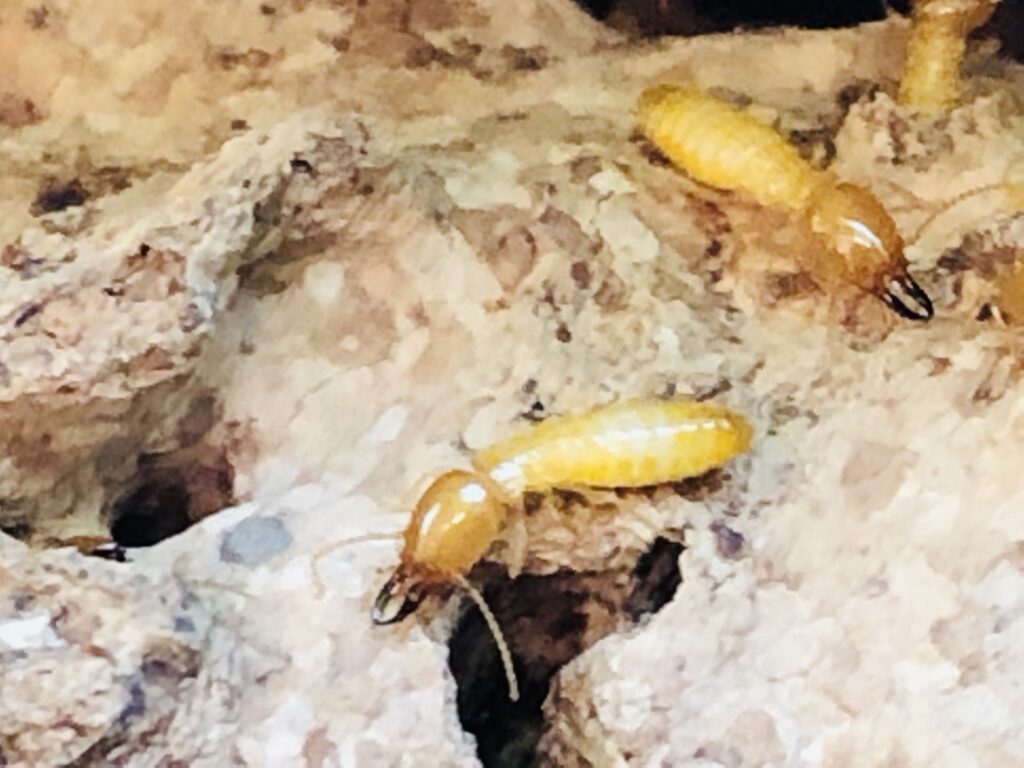
What do termites look like?
The most common type of termite (yes there are more than one species) found in homes across Victoria are the subterranean termite. They are white/pale in color and in some cases translucent. Some people call them white ants.
Termites like other species of insect are assigned different roles within the colony. If you find what looks like a termite, but it has a brown head or seems a little darker, this will be a soldier termite.
A termite nest wlll contain flying termites called alets. When these alets reach maturity and the nest is large enough they swam from the nest and search for a new location to start another colony. This swarming occurs every March and October and March depending on weather conditions.
How do I prevent Termites?
- There are some practical steps you can implement help reduce the likelihood of having an infestation within your house.
- Plants growing up your house can look pretty, however, this can provide an entry point for termites into your home. Some plants also send out long roots that will grow under the foundations of your house which allow termites access into areas that are not easy to detect. The same can be said of trees be aware of species that have extensive root systems.
- Be aware if you are planning any building changes or additions this can effect and even void previous termite treatments. Typical situations that can cause damage are adding veranda’s, pergolas, extensions to concrete slabs are just a few situations to be aware. Essentially any work that is done around the property can allow termites access to a previously treated home.
- Termites love wet and damp places or any area where there is a slow leaking or dripping tap. Getting these repaired is a good idea as it reduces moisture levels.
- Treat all timber that is to be used in the construction of decking areas, garden beds or installing fencing
- Remove all dead wood and tree stumps that are near your property or have them treated, otherwise termites will find a new home.
- Avoid storing timber against your home or in the subfloor and remove any dead leaf material.
- Mulch in garden beds in direct contact with your house, creates moisture in the soil therefore remove these whenever possible.
- Keep your subfloor vents clear at all times and check mulch does not block vents around the home. Good air flow and ventilation are essential to reduce subterranean termites.
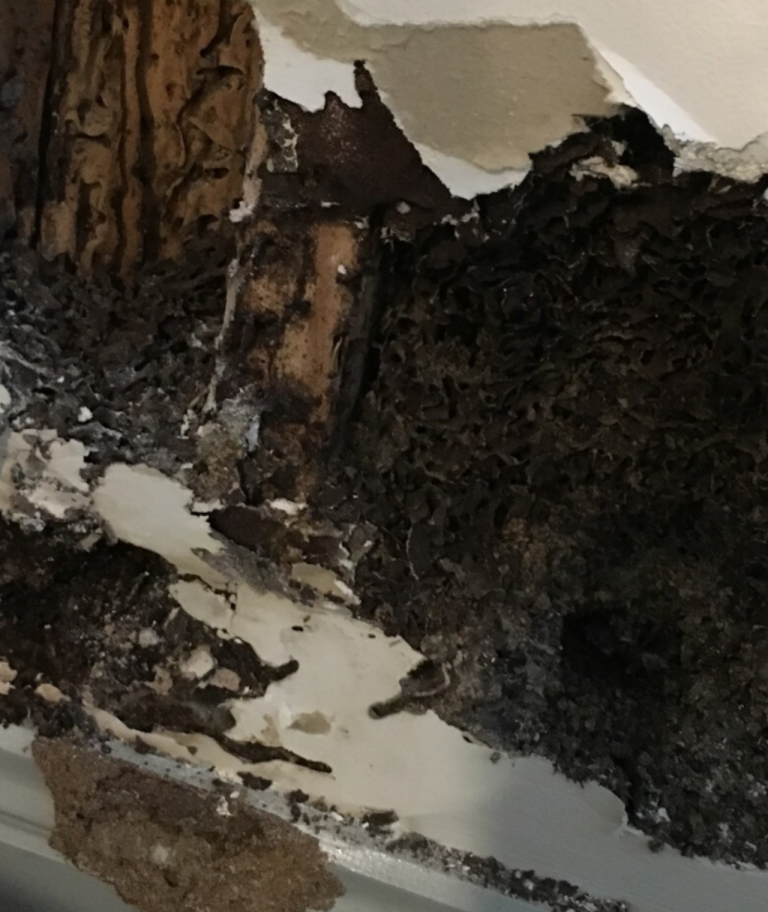
How do I know I have termites?
The termite itself is not usually seen, as they avoid sunlight. A common way that people realise they have termites is by hearing them -some people report hearing them eating the woodwork.
The natural behaviour of termites is to eat wood from the inside out, leaving a thin external surface that resembles paper, however, this may not be seen if the timber is painted or varnished.
Many customers report that they have pushed their vacuum cleaner through the door frame or wall!
A few things to look out for, that might indicate that you have termite activity in your home or structure:
Timber sounding hollow when lightly tapped
Been able to push your finger through timber ie door frame, window sills, skirting boards, floorboards.
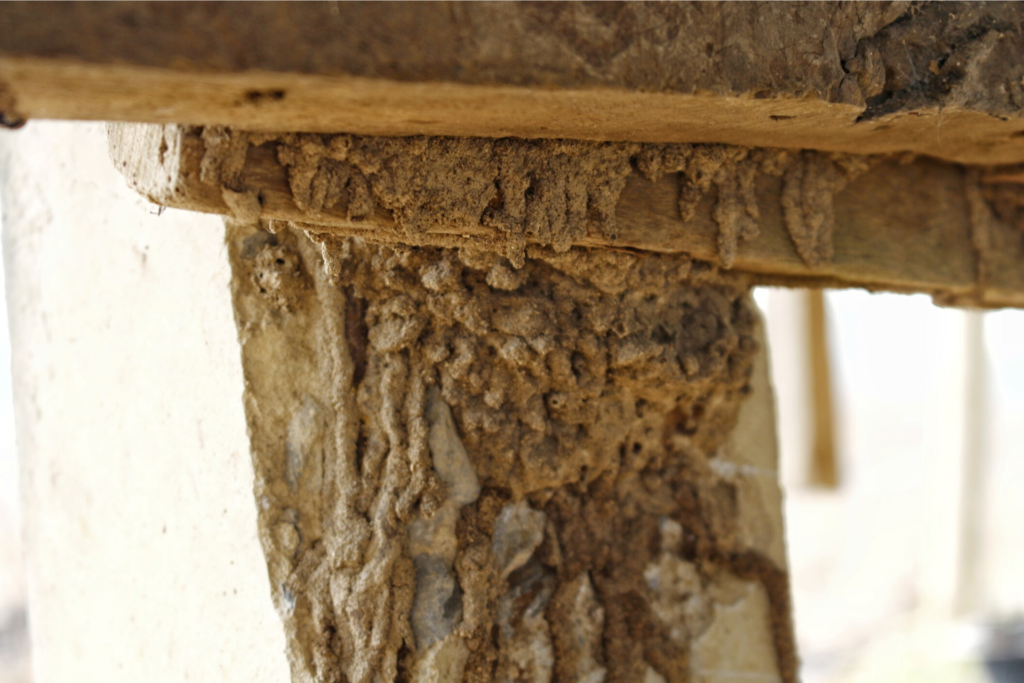
Termite Mud
Termites build mounds and tunnels of mud so they can keep themselves protected as they travel around. These tunnels keep them warm and in their ideal damp environment. The tunnels can be hard to spot, especially when constructed under the house, but can also be found in wardrobes or on the exterior of walls.
If you find these tunnels do not disturb them, as doing so will cause the termites to spread further, making them harder to locate and treat. Termites can even enter properties and structures via the roofline.

Will my home insurance cover termite damage?
Unfortunately NO home insurance policy provides cover for damage caused by termites.When thinking about termite protection, prevention is better than cure.
One in four homes are affected by termites and prevention is the best policy. A good rule of thumb is that for every 1 acre there will be 3 to 4 active termite nests. It is therefore not a matter of if , but when.

Can I treat termites myself?
Some people do try to do this, however it often ends in tears and costing more than would have been if a professional had been approached.
Termites hide very well this is why specialist equipment is used to help locate them to ensure they are terminated.
If a termites colony is disturbed, they will often re-route and the enter you home via another route. Better to seek professional advice.
We are often called after people have tried to do this and have made things much worse.

How do I protect my home against termites?
People are surprised to learn that termites travel underground to infest a home. Houses on wooden stumps or concrete stumps can be equally affected. Also having a concrete slab as a foundation is also no protection as this provides a thermal print , providing the termites with ideal conditions of cool and damp. They can easily get through cracks that naturally form in a concrete slab, therefore having a concrete slab does not protect you against termites.
There are, however several effective methods available to help protect your home or structure. Vortex Pest Management provide several approaches that are industry and government endorsed. These include:
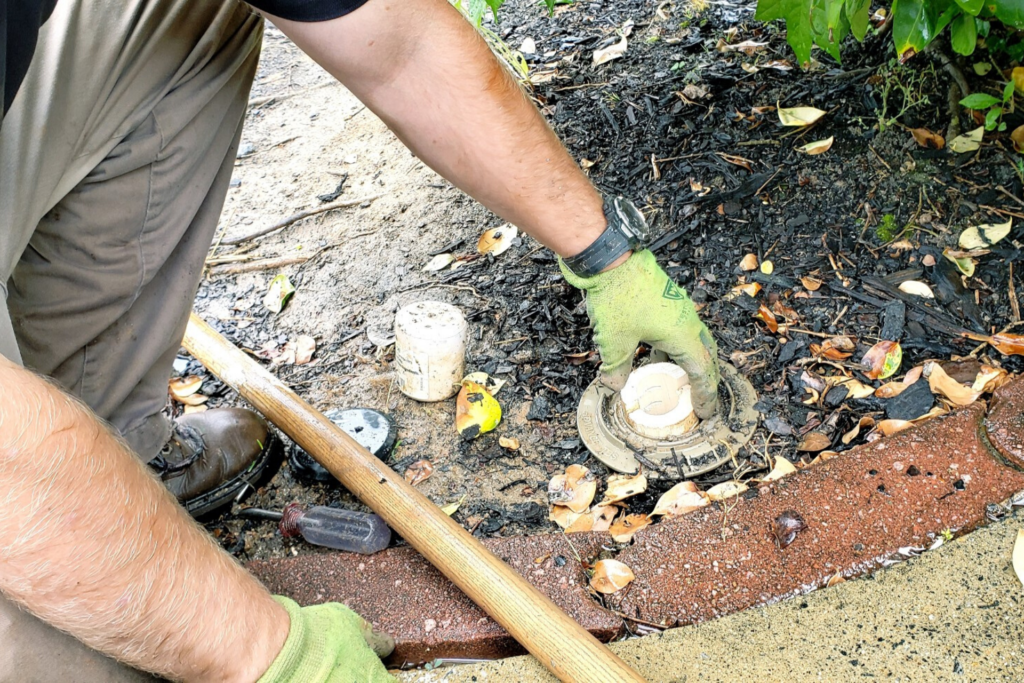
Terminate Monitoring:
Your professional termite specialist, will place small termite bait stations around the perimeter of your property.
These in-ground bait stations are deployed to determine how active termites are within a given area. They can also be installed to lure the termites away from the property.
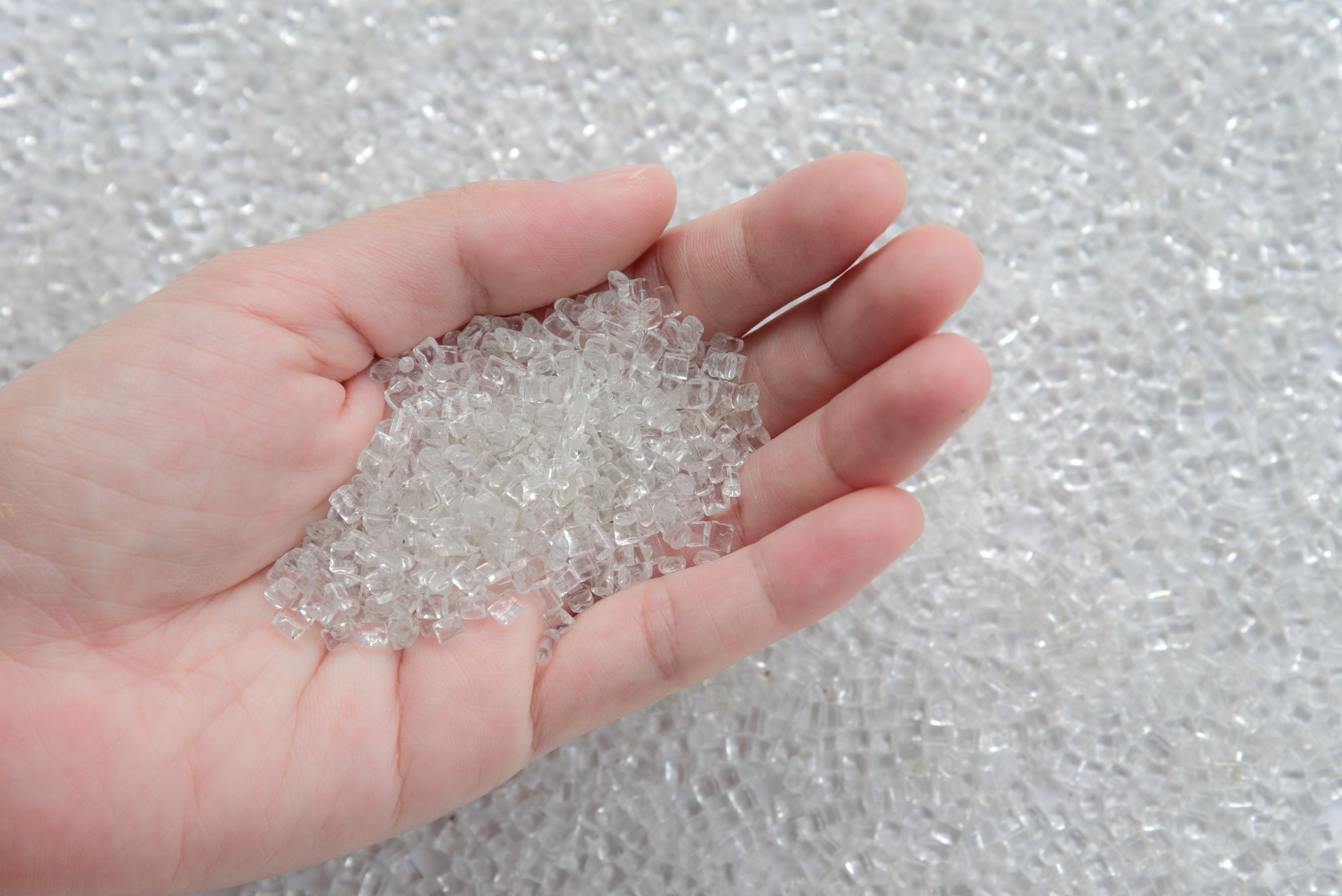
Chemical Treatment:
Your professional termite specialist applies a chemical to the soil under and around the property and structure.
The product prevents new termites from entering your property or kills them on contact.
Different products have different effects and either repel or kill on contact, your pest specialist will advice regarding the best approach.
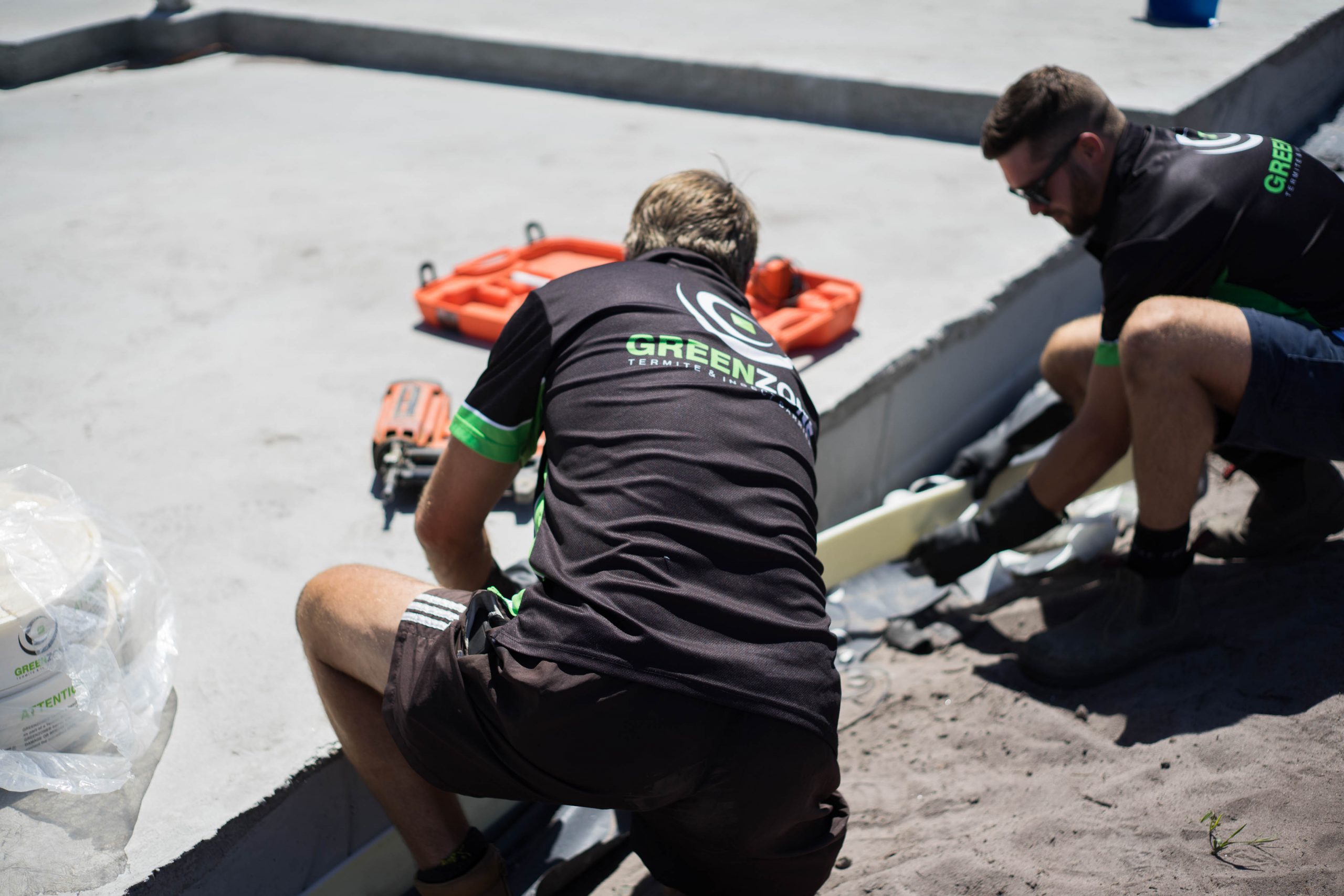
Physical Termite Barrier:
Pre Construction: this can be used when building a new home or making any structural additions. A layer of physical material is laid on the soil before the concrete slab is poured. It can also be used around the perimeter of a structure as a partial barrier to stop termites entering your home.
Post-construction: All areas around the perimeter that are concerned are drilled at intervals and injected with the most suitable product to create a barrier under the concrete.
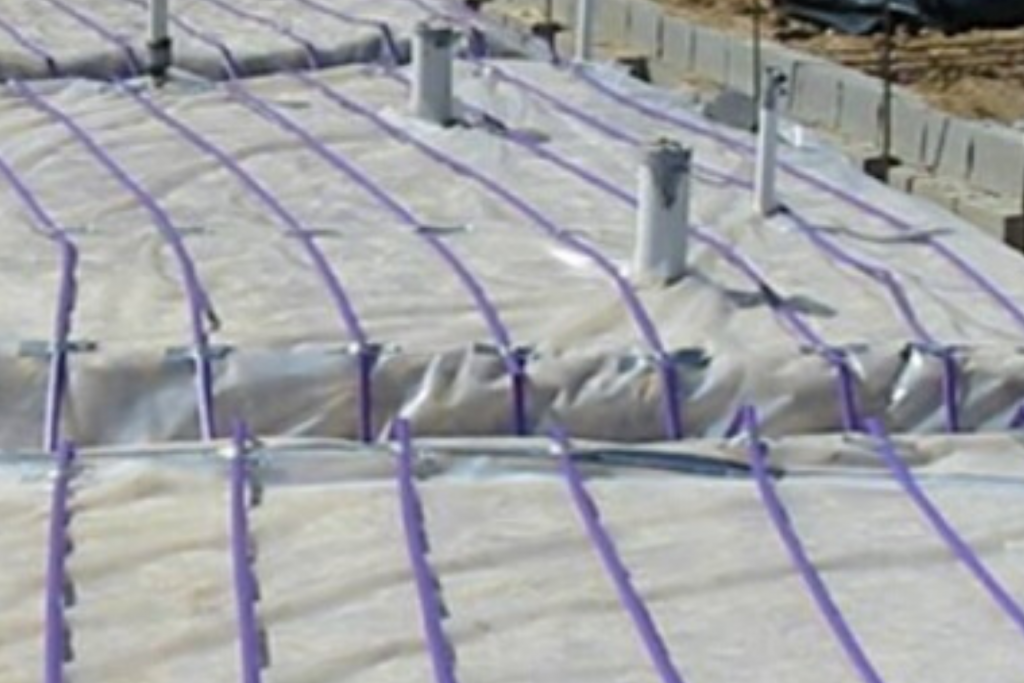
Reticulation System:
This is a network on pipes laid underground at the foundation level which distribute a specific chemical around the property or structure.
This system allows the chemical to be topped up/reapplied as required. This system is deployed before construction begins or around the perimeter before landscaping etc..

How much does a termite barrier cost?
This is hard to answer as it really does depend on several factors including: the size of your house or structure whether this is on a concrete slab or stumps type of chemical selected type of soil type of treatment you choose once you have been given all the relevant information and options.
All termite treatments are required to be compliment with the Australian government standard AS 3660.2 If you choose to select an option not recommended by the termite specialist, it may still be possible to do the treatment but will affect the warranty and inspection intervals post-treatment.
Your professional termite specialist will advise which system is required or in some cases which combination of system are advised to ensure your home or structure is protected as per the government regulation AS 3660. All treatments are subject to an onsite inspection prior to the commencement of any treatment.
Wood Borers

What are wood borers?
These insects and tiny therefore almost impossible to see. However, the damage they cause is very evident. They are insects that love to invade and affect all kinds of wood material. Like most insects, they have different life stages. They can live (depending on the species) for up to 11 years in timber that is affected. During there life cycle they continue to damage the wood that they infect. It is not common knowledge that they are as damaging as termites and therefore we always advise that you tackle this problem quickly.
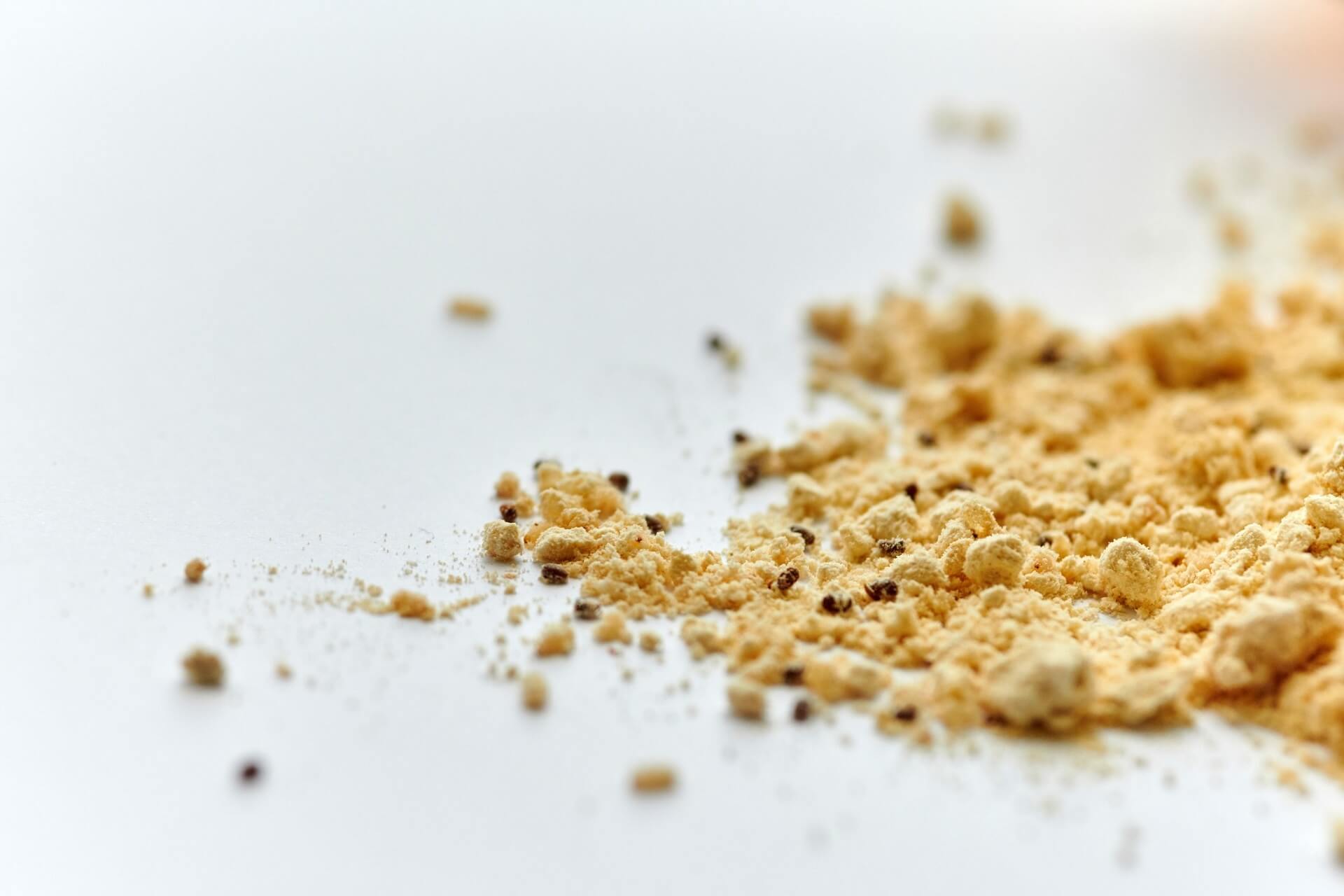
Treatment
Vortex pest management uses an effective acid-based product that not only penetrates the timber but also kills the adult beetle. This, therefore, breaks the destructive breeding cycle. The product used also has the effect of blocking the holes already in situ.
The two most common species found in Victoria are the powder post beetle and the common furniture beetle.
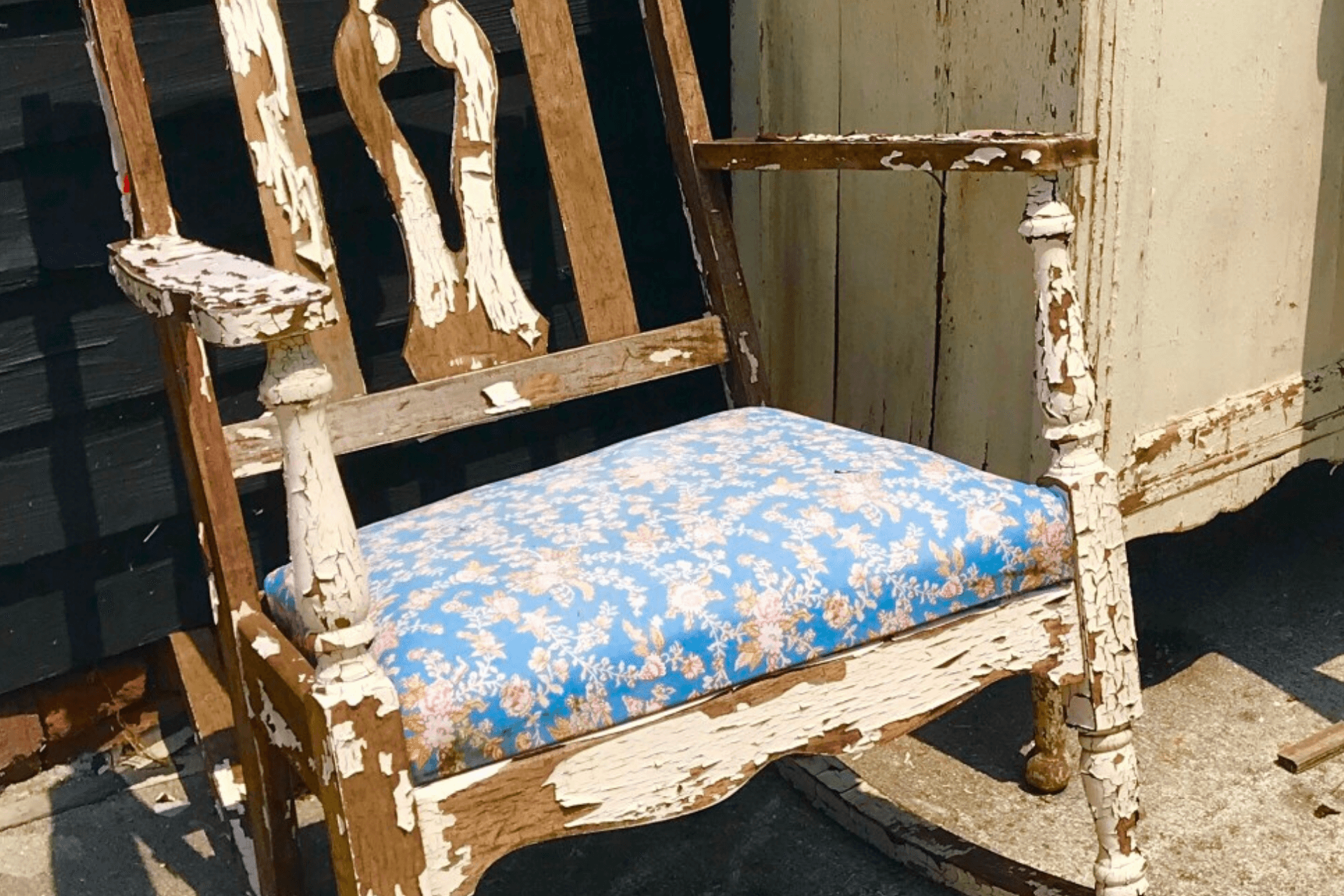
Common Furniture beetle
This beetle thrives in humid but cool conditions. This borer attacks old furniture or any well-seasoned wood. It can also be found in flooring and has a particular liking for softwoods such as pines. They leave a residue resembling fine talcum powder.
The adult has a very short life span living only a few days outside of the wood environment, during which time the female lays her eggs. The larva once hatched eat starch that is present in the wood and the cycle begins again.
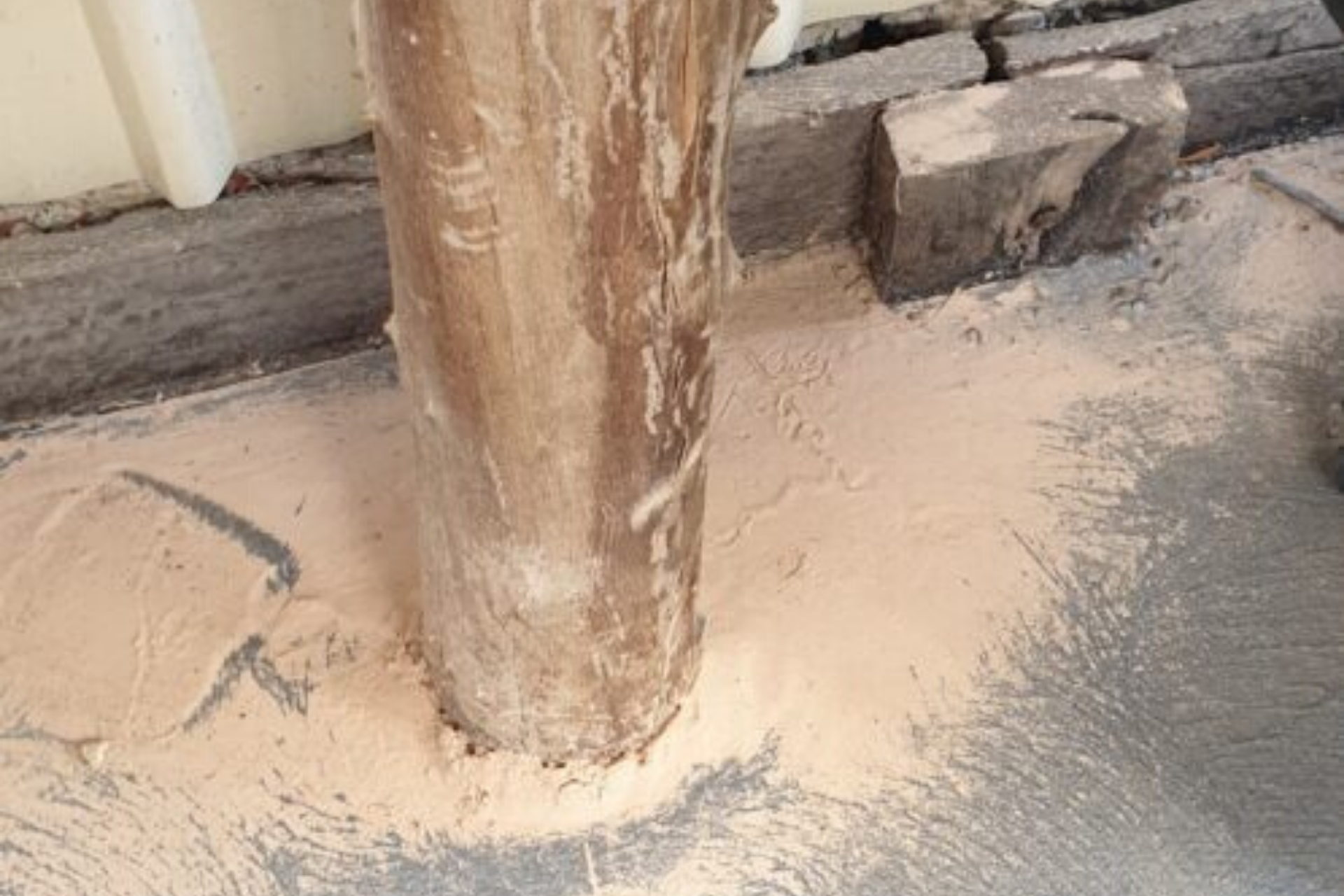
Powder Post Beetle
This beetle feeds on Hardwood as is often found in furniture, especially older furniture made from hardwood and also softwoods such as pine woods. This beetle leaves a residue that resembles course talcum powder.
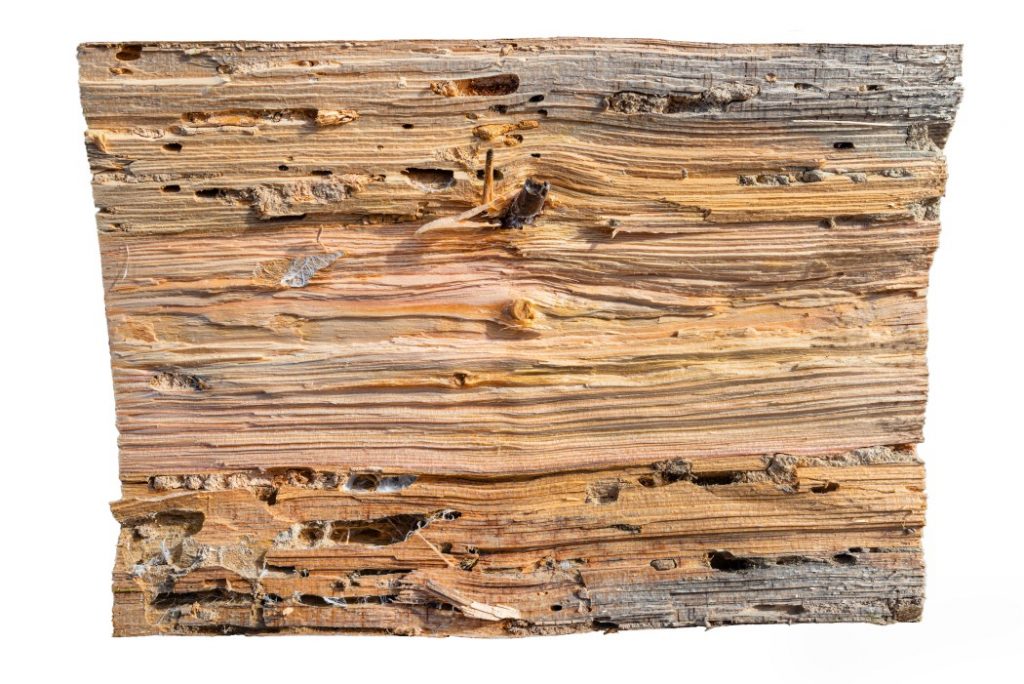
House Longhorn Beetle
This beetle has a long life span anywhere, between 3-11 years and when an infestation is present the wood can have a blistered appearance and is quick to spread. It has a tendency to attack chimney areas.
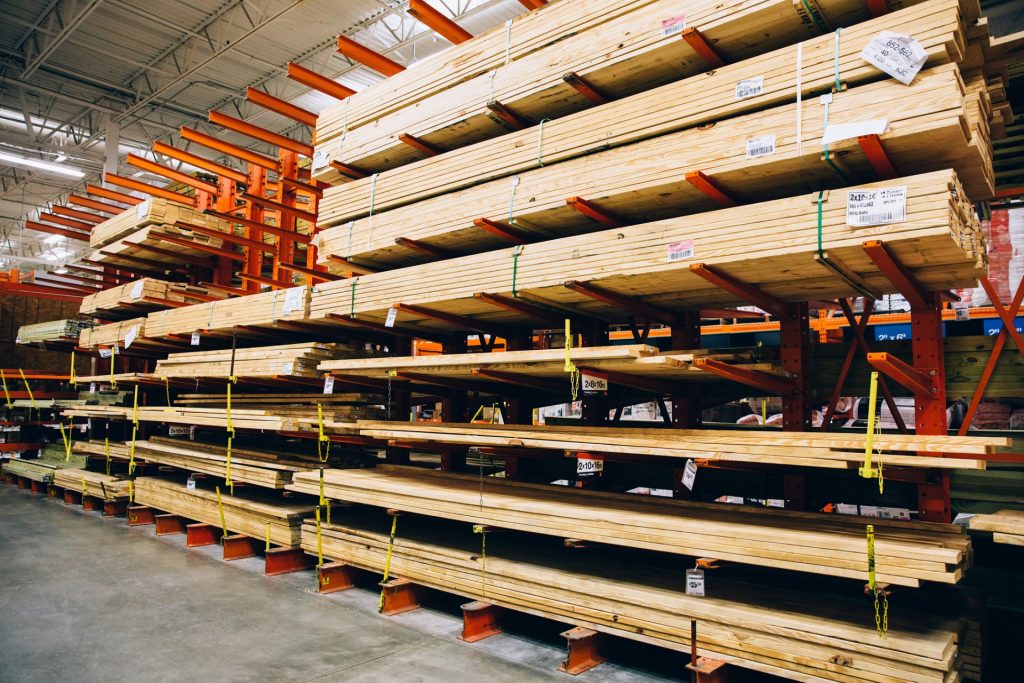
What type of wood is at risk?
In theory most woods can be affected. However, there are some wood varieties that are more resistant, these woods tend to have insufficient starch in the sapwood, on which the wood borers feed or the pores in the wood are too narrow for the female to lay her eggs.
However, environmental conditions such as humidity and poor ventilation can have the effect of increasing pore size I the wood which allows the female to enter and lay her eggs.
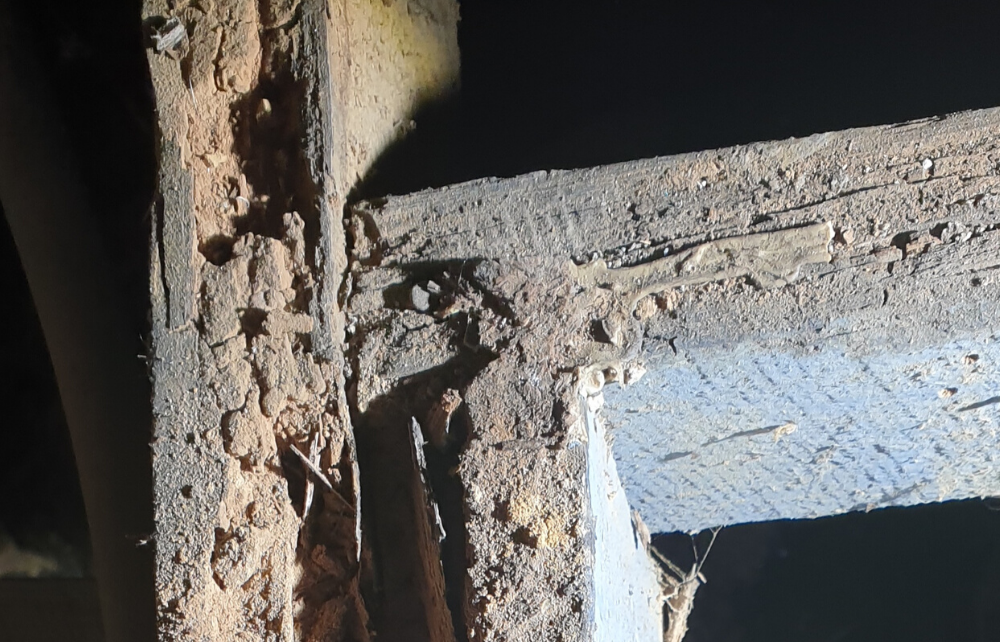
What damage can they cause?
These wood boring insects can cause huge amounts of damage. Besides furniture and piano infestations which are inconvenient and cause monitory loss, areas where structural integrity is vital i.e roofing, beams, joists ,bearers etc can be quickly compromised causing unsafe structures and structural collapse of the timber.
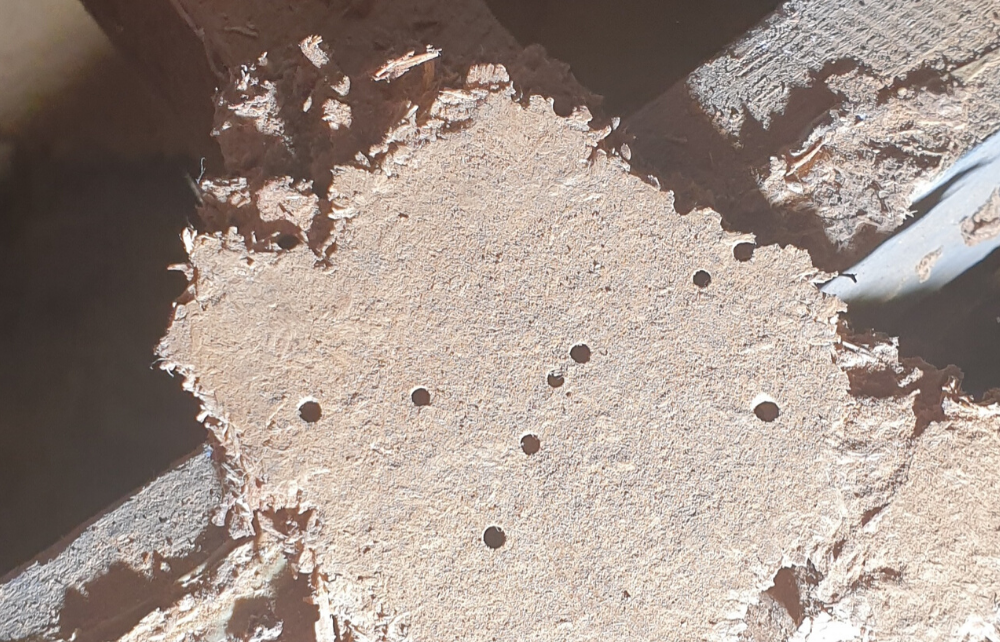
How do I know I have wood borers?
The most common visual signs are the presence of small holes in the wood which are usually round or oval and have well defined sharp edges. These are the exit holes where adult borers have emerged. Or you may notice dead beetles on the ground.
Depending on the age of the affected timber and level of infestation, additional treatments may be required. Your pest technician will advise as appropriate and explain all options.

Will my home insurance cover borer damage?
Unfortunately, NO home insurance policy provides cover for damage caused by wood borers.
Customers only realise this after they discover they have a wood borer issue. If you suspect that you have wood borers or have seen any fine wood powder around your home, contact a professional so that it can be treated quickly.
Important: It is worth noting that the wood borer beetle can cause the same level of damage to timber and wood structures as the termite.
